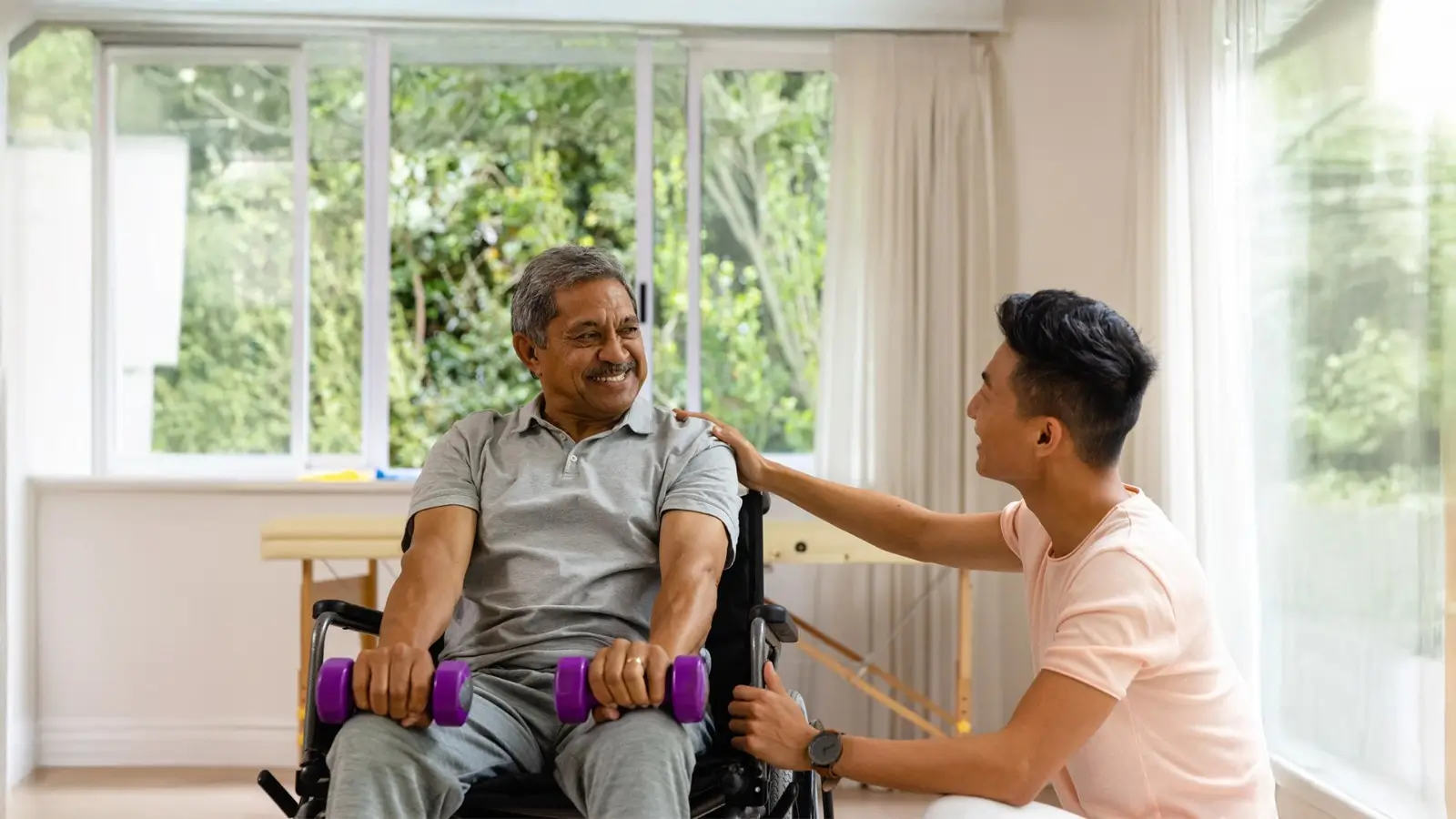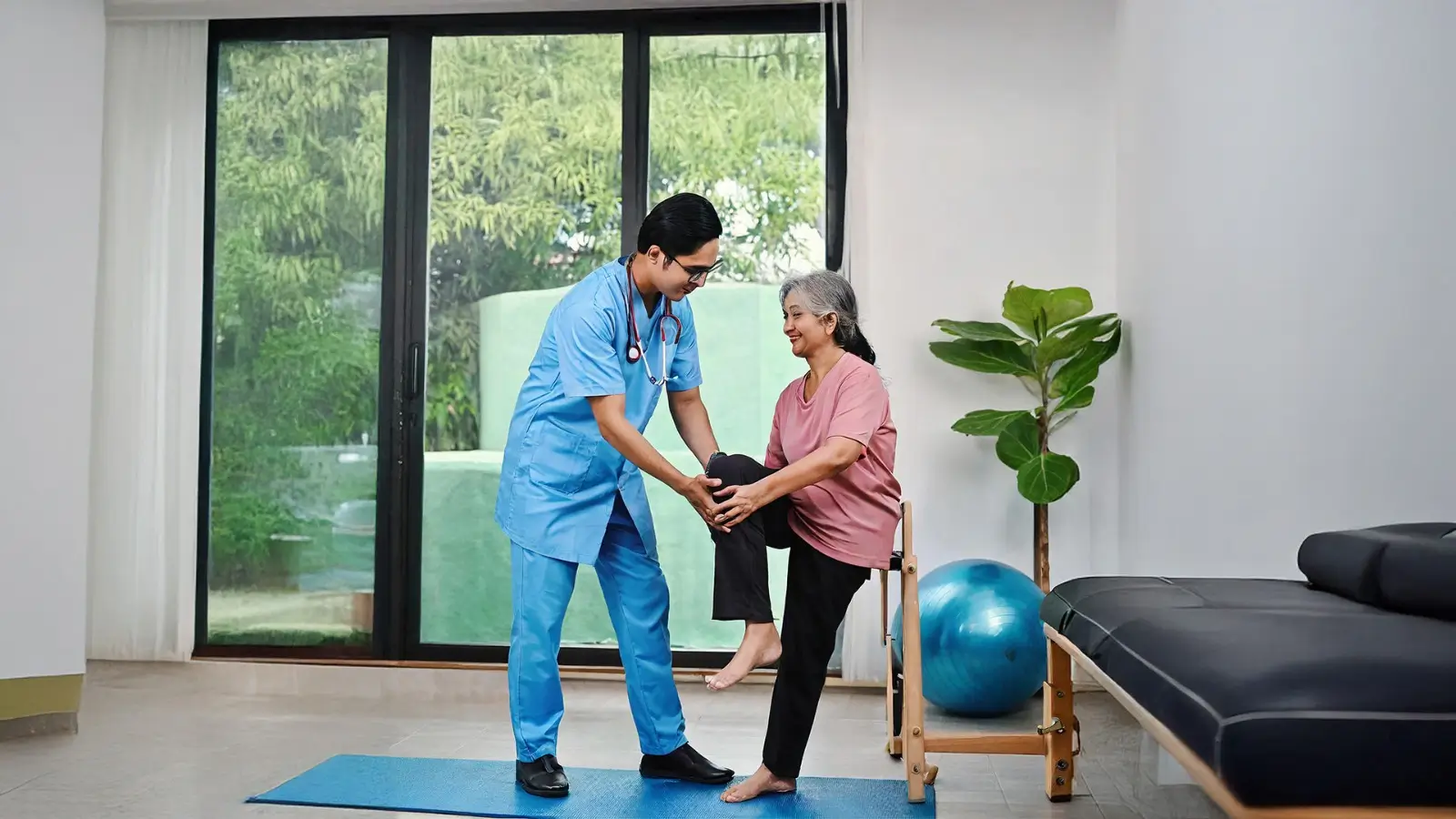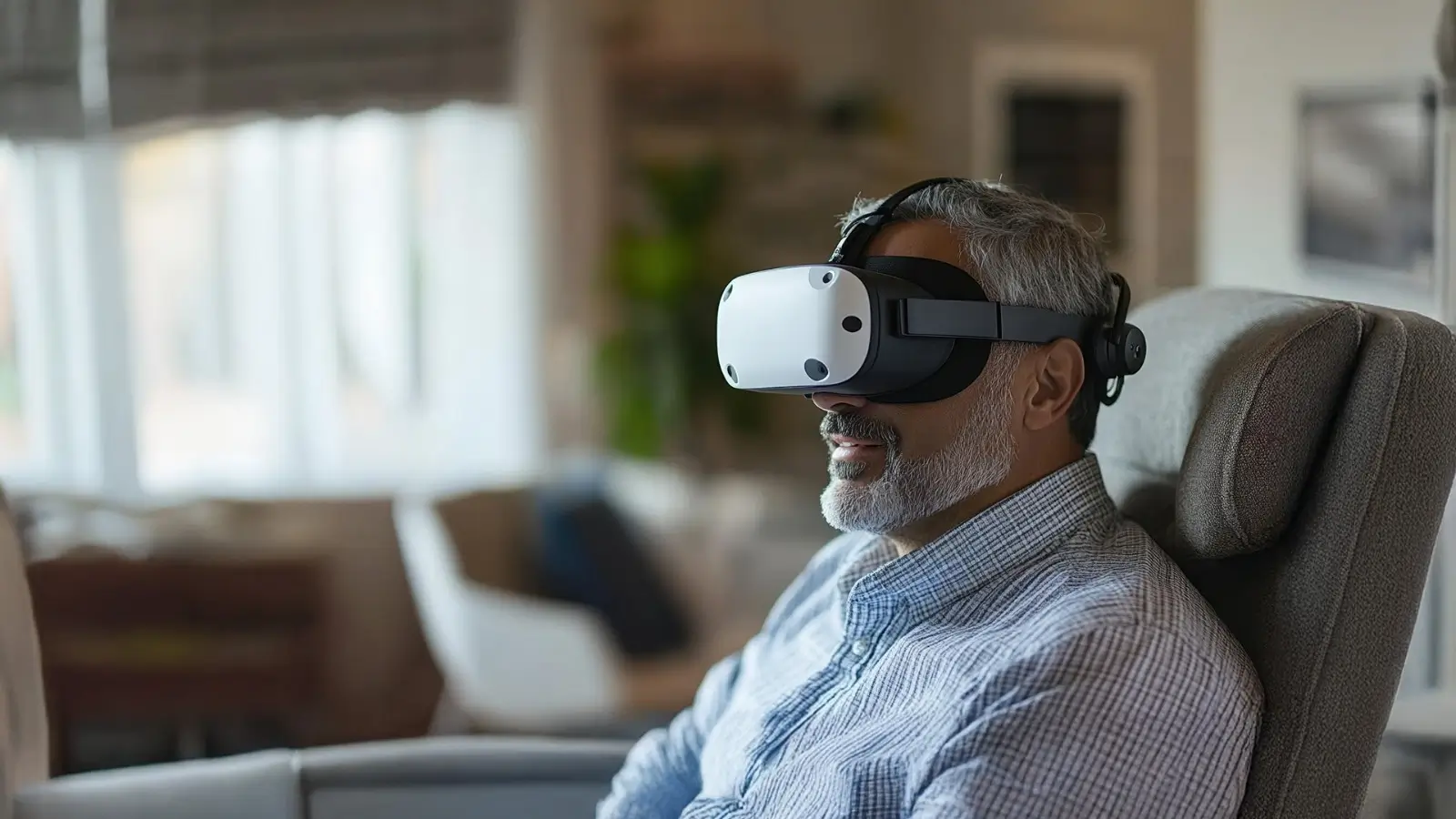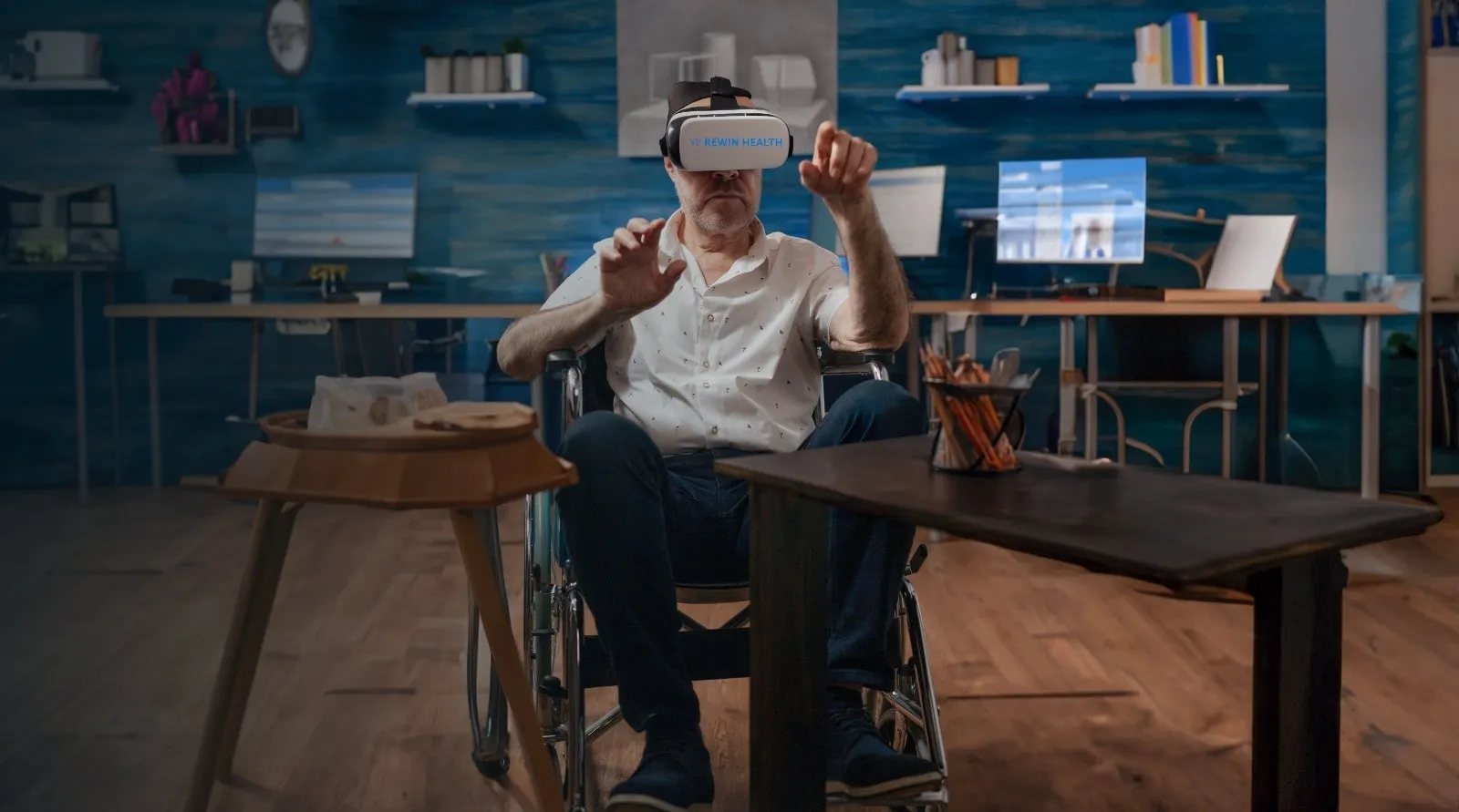Imagine a world where patients recover faster, with less pain, and therapists have real-time tools to guide progress. That’s what Rewin Health is making possible.
The rehabilitation landscape is changing rapidly, and what seemed like science fiction just a few years ago is now helping patients walk again, breathe better, and regain their independence. Virtual reality headsets are replacing boring exercise routines, artificial intelligence is tracking every movement with precision, and gamification is turning therapy sessions into engaging experiences that patients actually look forward to.
This transformation isn’t just about flashy technology – it’s about fundamentally improving how we approach recovery. When I think about the countless hours patients spend in traditional therapy, often struggling with motivation and unclear progress markers, the potential of these digital tools becomes incredibly exciting.
About Rewin Health
Rewin Health stands at the forefront of digital therapeutic rehabilitation, combining immersive Virtual Reality (VR), AI-based motion sensors, and gamification to enhance physiotherapy outcomes. Their innovative approach spans across neurological, musculoskeletal, cardiopulmonary, geriatric, and pediatric rehabilitation – essentially covering the full spectrum of conditions that physiotherapists encounter daily.
What sets Rewin apart is their commitment to evidence-based innovation. Through extensive clinical collaborations and real-world studies, they’re not just creating cool technology – they’re building solutions that actually work in clinical settings. Their mission centers on making therapy more engaging for patients, more measurable for outcomes tracking, and more effective overall, while providing physiotherapists with advanced tools that enhance rather than replace their expertise.
The company’s approach recognizes a fundamental truth: technology should support the therapeutic relationship, not complicate it. Physiotherapists remain central to treatment planning and patient guidance, while VR and AI provide the engaging, data-rich environment that keeps patients motivated and therapists informed.
Message from Rewin
This comprehensive look at VR and AI in physiotherapy highlights the transformative impact of immersive technology in rehabilitation, particularly in areas like pulmonary rehabilitation where patient engagement has traditionally been challenging. The goal is to equip physiotherapists with cutting-edge insights, research updates, and future trends that keep them ahead of the curve in adopting innovations that genuinely improve patient care.
One of the most compelling aspects of VR-supported therapy is how it addresses multiple challenges simultaneously. VR keeps patients motivated through engaging, game-like experiences while simultaneously reducing pain perception and anxiety levels. Meanwhile, therapists maintain their central role in planning and guiding sessions, with VR simply adding an engaging, supportive dimension to therapy rather than replacing human expertise.
This balanced approach acknowledges that the best outcomes come from combining human insight with technological capability – not from choosing one over the other.
Condition Spotlight:
Cardiopulmonary Rehabilitation
Cardiopulmonary rehabilitation has long been one of the more challenging areas of physiotherapy, with patients often struggling to maintain motivation during repetitive breathing exercises and endurance training. However, immersive VR combined with conventional therapy is showing remarkable promise in this field.
Enhanced Exercise Endurance and Breathing Efficiency
VR environments can transport patients to calming beaches, mountain trails, or peaceful gardens while they perform breathing exercises and cardiovascular training. This immersive distraction not only makes the experience more pleasant but actually helps patients achieve better breathing patterns and exercise endurance. When someone is focused on exploring a virtual environment, they’re less likely to fixate on the difficulty of their exercises.
Improved Patient Motivation and Adherence
Traditional cardiopulmonary rehabilitation often involves repetitive exercises that can feel monotonous. VR transforms these sessions into interactive experiences where patients might be climbing virtual mountains, swimming with dolphins, or walking through beautiful landscapes – all while performing their prescribed therapeutic movements. This gamification approach has led to significantly higher attendance rates and better long-term adherence to treatment plans.
Real-Time Data for Therapists
The integration of motion sensors and AI provides therapists with unprecedented insight into patient performance. They can see exactly how breathing patterns change during different activities, track endurance improvements over time, and adjust treatment plans based on objective data rather than subjective reports alone.
Better Recovery Outcomes and Patient Satisfaction
The combination of increased motivation, better adherence, and data-driven treatment adjustments naturally leads to improved recovery outcomes. Patients report higher satisfaction levels, and clinical measurements show faster progress toward rehabilitation goals.
Product Updates
Rewin Health’s journey demonstrates the rapid evolution possible in digital therapeutics. Starting with just 8 gamified therapeutic exercises focused on stroke rehabilitation, they’ve now expanded to over 40 gamified therapeutic exercises covering multiple conditions and patient needs.
This growth reflects not just technological advancement but deep learning about what works in clinical practice. Each new exercise is developed based on feedback from both patients and therapists, ensuring that additions genuinely improve the therapeutic experience.
Current Capabilities
The platform now integrates digital golden standard assessments, providing therapists with standardized measurement tools that were previously only available through expensive equipment or time-consuming manual processes. Real-time prognosis charts help both patients and therapists visualize progress, while digitalized discharge summaries ensure continuity of care and provide valuable data for long-term outcome tracking.
These features are making physiotherapy more evidence-based and outcome-driven, addressing a long-standing challenge in the field where much of the assessment relied on subjective observations and patient self-reports.
Upcoming Releases
The development pipeline shows Rewin’s commitment to comprehensive care:
Range of Motion (ROM) module for back & spine: This will address one of the most common reasons people seek physiotherapy
Digitalized functional assessment for shoulder, neck, knee, and hip: Covering the major joint systems that account for the majority of musculoskeletal complaints
Comprehensive whole-body functional assessment with automated digital reports: This represents a significant step toward fully integrated digital rehabilitation platforms
These upcoming features suggest a future where every aspect of physiotherapy assessment and treatment can be enhanced through digital tools while maintaining the human-centered approach that makes therapy effective.
New Customer Addition
The “New to Rewin Camp” initiative represents more than just business growth – it’s about expanding access to advanced rehabilitation technology. Each new clinic and rehab center that joins the VR-based ecosystem brings these benefits to more patients who might otherwise only have access to traditional therapy methods.
This expansion is particularly significant in areas where access to specialized rehabilitation equipment has been limited. By making advanced therapy tools available through VR platforms, the technology helps level the playing field between large urban rehabilitation centers and smaller clinics in underserved areas.
The onboarding process focuses on ensuring that new healthcare providers can effectively integrate VR and AI tools into their existing workflows, providing training and support that helps therapists feel confident using these new capabilities rather than overwhelmed by them.
Influence of Digital Technology/AI in Physiotherapy
The integration of digital technology and AI in physiotherapy represents a fundamental shift toward personalized, data-driven rehabilitation. This isn’t about replacing therapists with robots – it’s about giving healthcare providers tools that make their expertise more effective.
Personalized Rehabilitation Plans
AI enables therapy plans that adapt to each patient’s progress in real time. Instead of following rigid protocols, treatment can adjust based on how a patient performs on any given day. If someone is having a particularly good day, the system can increase challenge levels. If they’re struggling, it can dial back intensity while maintaining therapeutic benefit.
This personalization extends beyond just exercise difficulty. AI can learn individual patient preferences, identifying which types of virtual environments or game mechanics work best for each person’s motivation and engagement.
Making Therapy Engaging and Measurable
VR and motion sensors transform physiotherapy from something patients endure into something they genuinely enjoy. The gamification elements – earning points, completing challenges, exploring virtual worlds – tap into the same psychological drivers that make video games engaging.
Simultaneously, every movement is captured and analyzed, providing objective measurements that were previously impossible or extremely expensive to obtain. This combination of engagement and measurement addresses two of the biggest challenges in traditional physiotherapy.
AI-Driven Insights and Predictive Analytics
AI systems can identify patterns in recovery that might not be obvious to human observers. They can predict when a patient might be at risk of plateauing and suggest interventions before problems develop. They can also identify which therapeutic approaches work best for specific conditions or patient profiles, helping therapists make more informed treatment decisions.
Data-Backed Decision Support
Rather than replacing clinical judgment, AI provides therapists with comprehensive data to inform their decisions. Objective progress tracking, comparative analysis with similar cases, and predictive modeling all support clinical reasoning rather than replacing it.
Patient Benefits
From the patient perspective, the benefits are immediately apparent: greater motivation through interactive experiences, better adherence due to engaging content, and faster recovery through optimized, personalized treatment plans. The technology makes therapy something to look forward to rather than something to get through.
News from Around the World
The global adoption of AI and VR in physiotherapy is accelerating, with impressive results being reported from multiple continents.
AI-Run Physiotherapy Clinic Launches in NHS (England)
The National Health Service’s implementation of AI-powered physiotherapy represents a major validation of digital therapeutics. The reported results are striking: a 44% reduction in musculoskeletal wait times and a 55% reduction in back pain waiting periods. Perhaps even more impressive is the efficiency gain – saving 856 clinician hours per month while maintaining or improving patient outcomes.
This success in one of the world’s most established healthcare systems demonstrates that AI-supported physiotherapy isn’t just feasible but can deliver significant improvements in access and efficiency.
₹19 Crore Robotic Physiotherapy Unit Opens in Odisha, India
The opening of an advanced robotic physiotherapy unit in Sambalpur, with an additional ₹4.27 crore prosthetic and orthotic division, shows how emerging economies are leapfrogging traditional rehabilitation approaches. Rather than building conventional therapy departments, they’re investing directly in next-generation technology.
This approach could provide patients in these regions with access to rehabilitation technology that might not even be available in some developed countries’ facilities.
Mobile 3D Lab in USA
Des Moines University’s mobile biomechanics lab represents an innovative approach to bringing advanced assessment capabilities directly to athletes and patients. Using IMC sensors for comprehensive movement analysis, this mobile unit can provide sophisticated biomechanical assessments for injury prevention and rehabilitation optimization anywhere it’s needed.
This model could be particularly valuable for sports teams, rural communities, or other situations where bringing patients to advanced lab facilities is challenging.
Specialized Cerebral Palsy Rehab Unit in Lucknow, India
The establishment of a modern rehabilitation center specifically for cerebral palsy, combining physiotherapy, occupational therapy, and skill training, demonstrates the growing recognition that different conditions require specialized approaches supported by appropriate technology.
Wearable Triboelectric Sensor for Real-Time Rehab
The development of flexible, self-powered devices for tracking gait and motion represents a significant breakthrough in making continuous monitoring affordable and practical. These sensors could enable therapists to track patient progress between sessions and provide feedback on home exercise programs – extending therapeutic oversight beyond the clinic.
Hot News – Study Approvals & Publications
The growing body of research supporting VR and AI in physiotherapy provides the evidence base that healthcare systems need to justify investment in these technologies.
Current research initiatives include:
Original Article: Retrospective survey of Indian patient satisfaction in immersive VR with AI-based motion sensor therapy, focusing on feasibility and acceptance insights
JIMR Study: Research examining clinical outcomes and efficiency improvements
Frontiers Study: Investigation into neuroplasticity changes associated with VR-supported rehabilitation
GBS Case Study: Detailed analysis of Guillain-Barré syndrome recovery using digital therapeutics
Stroke Case Series: Comprehensive examination of stroke rehabilitation outcomes with VR and AI integration
These studies are crucial for building the evidence base that will guide best practices and inform healthcare policy decisions about digital therapeutics adoption.
Future Outlook
The trajectory of digital physiotherapy suggests even more exciting developments ahead.
Brain-Computer Interfaces (BCI) for Neuro Rehab
BCI technology could enable direct neural control of rehabilitation exercises, particularly valuable for patients with severe motor impairments. Imagine stroke patients being able to control virtual environments through thought alone, providing neuroplasticity stimulation even when physical movement is limited.
Mixed Reality (MR) Combining Real + Virtual Environments
Mixed reality could blend the benefits of VR engagement with real-world physical therapy. Patients might see virtual targets overlaid on their actual environment, or receive real-time form corrections displayed as holographic guides during exercises.
AI-Generated Adaptive Therapy Plans Based on Fatigue Monitoring
Advanced AI could continuously monitor patient fatigue levels through various biomarkers and automatically adjust therapy intensity throughout sessions. This would optimize therapeutic benefit while preventing overexertion – a particularly important consideration for patients with chronic conditions.
Remote Rehabilitation Dashboards
Comprehensive remote monitoring systems could enable therapists to oversee multiple patients’ home exercise programs in real-time, intervening when needed and providing encouragement when progress stalls. This could dramatically expand access to high-quality physiotherapy guidance.
Did You Know?
The research backing VR-supported rehabilitation continues to demonstrate impressive results:
- VR-supported rehab reduced dropout rates by 20% in recent studies.
- Patients reported feeling 40% more motivated with gamified VR therapy.
These statistics represent more than numbers – they reflect real people who stayed engaged with their recovery when they might otherwise have given up, and patients who found joy in the healing process rather than just enduring it.
The 20% reduction in dropout rates is particularly significant because adherence to therapy regimens is one of the biggest predictors of successful outcomes. When patients stick with their treatment plans, they’re much more likely to achieve their rehabilitation goals.
Community & Learning
The future of physiotherapy isn’t just about technology – it’s about building communities of practice that can effectively integrate these tools into patient care.
Upcoming CME Workshop: “Digital Tools in Physiotherapy”
Scheduled for October 2025 in Chennai with online participation options, this Continuing Medical Education workshop will provide hands-on training for physiotherapists interested in incorporating digital tools into their practice. The hybrid format ensures accessibility regardless of geographic location.
Call for Therapists
Healthcare providers using VR and AI in their rehabilitation practices are invited to share their experiences, case studies, and insights. These real-world stories provide invaluable guidance for other therapists considering adopting digital therapeutics and help build the collective knowledge base that benefits the entire profession.
The invitation to share stories recognizes that the most valuable insights often come from practitioners who are working directly with patients, navigating the challenges and discovering the opportunities that emerge when cutting-edge technology meets real-world healthcare needs.
The transformation of physiotherapy through VR and AI isn’t coming – it’s here. From NHS clinics in England to rehabilitation centers in rural India, from mobile labs in the United States to specialized pediatric units across the globe, digital therapeutics are proving their value in improving patient outcomes while making therapy more engaging and efficient.
As we look toward a future that includes brain-computer interfaces, mixed reality environments, and AI systems that can predict and prevent rehabilitation setbacks, one thing remains clear: the goal isn’t to replace the human elements of healthcare but to enhance them. The most successful implementations of VR and AI in physiotherapy maintain the therapeutic relationship at their center while providing tools that make that relationship more effective, more engaging, and more likely to achieve the outcomes that matter most to patients – getting better, faster, with less pain and more hope along the way.
About
Making Rehabilitation affordable, Accessible & Patient Centric for 2 Billion People








